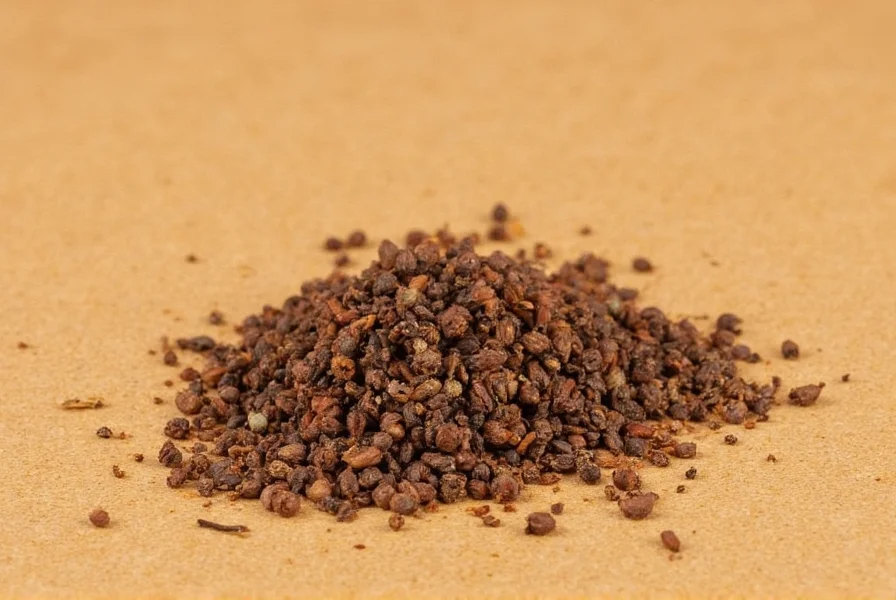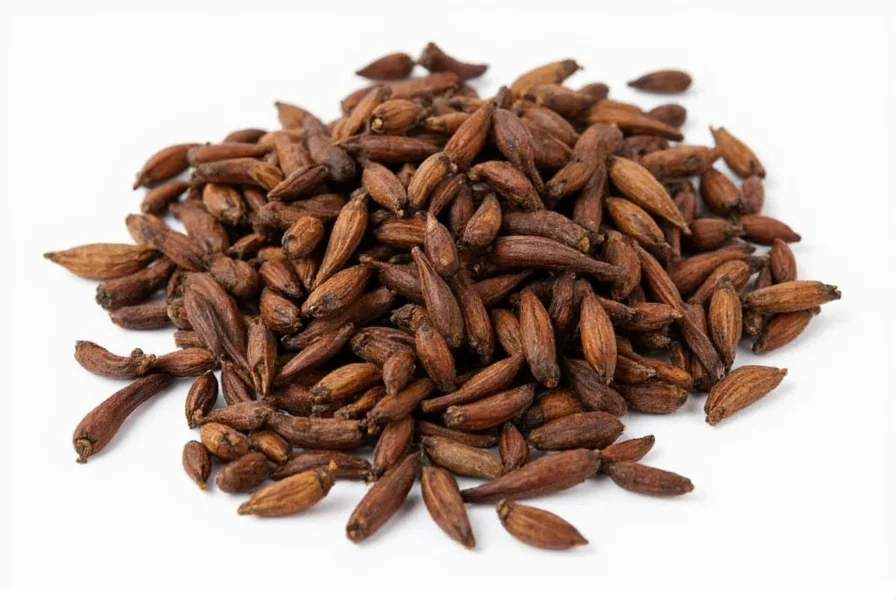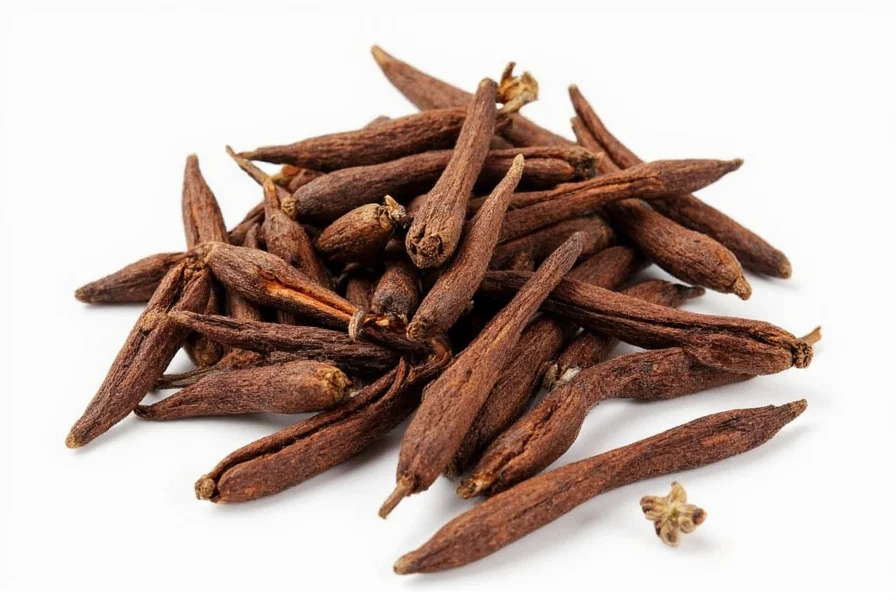Understanding cloves images is essential for cooks, herbalists, and anyone working with this versatile spice. The distinctive appearance of cloves makes them valuable for visual identification in both whole and ground forms. This guide provides comprehensive visual references to help you accurately recognize cloves in various contexts.
Visual Characteristics of Cloves
When examining cloves images, several key visual features distinguish genuine cloves from other spices:
| Feature | Description | Identification Value |
|---|---|---|
| Shape | Nail-like with tapered stem and rounded head | Most distinctive characteristic |
| Size | 1-2 cm in length, approximately 5 mm in diameter | Differentiates from smaller spice seeds |
| Color | Rich reddish-brown to dark brown | Indicates freshness and quality |
| Surface | Smooth with visible oil glands on the head | Confirms authenticity |
Different Types of Cloves Images for Identification
Effective cloves visual references include multiple perspectives to capture the complete appearance:

Whole Cloves Images
High-quality whole cloves images display the complete bud before processing. These references show the characteristic nail shape with a distinct stem end and bulbous head containing essential oils. Proper whole cloves pictures highlight the reddish-brown color that indicates freshness, as older cloves may appear darker and lose potency.
Clove Bud Development Images
Understanding the growth stages through clove bud images helps identify quality. The buds start as pale flowers that turn green, then pink, and finally reddish-brown when ready for harvest. The best cloves images for identification show the mature, unopened buds that have been sun-dried.
Clove Plant Images
Contextual clove plant images provide valuable reference for understanding where cloves originate. These pictures show the evergreen Syzygium aromaticum tree with glossy leaves and clusters of flower buds. Seeing the plant in context helps distinguish true cloves from similar-looking spices.

Common Visual Confusions with Cloves
Many people confuse cloves with other spices when relying solely on visual identification. Understanding these differences is crucial:
- Cloves vs Allspice Berries: Allspice berries are round and smaller (4-7 mm), while cloves have the distinctive nail shape
- Cloves vs Star Anise: Star anise forms a star-shaped pod with 6-8 points, completely different from individual cloves
- Cloves vs Nutmeg: Nutmeg is a larger, oval seed, not a flower bud
- Cloves vs Capers: Capers are pickled flower buds but appear green and come in jars
Practical Applications of Cloves Visual Identification
Accurate visual recognition of cloves serves several important purposes:
Culinary Uses
Chefs rely on proper cloves identification images to select quality spices for recipes. Whole cloves images help determine freshness, as plump, reddish-brown buds contain more essential oils than shriveled, dark specimens. This visual knowledge prevents substitution errors in spice blends and traditional dishes.
Botanical Studies
Botanists and students use detailed cloves images to study the Myrtaceae family characteristics. The distinctive flower bud structure appears in botanical illustrations and educational materials. High-resolution cloves pictures reveal the tetramerous flower structure with four petals and sepals visible in the bud's head.
Quality Assessment
Professional spice traders examine cloves images to assess quality indicators. The best cloves pictures show uniform color, intact buds without cracks, and appropriate moisture content. Visual inspection helps identify potential adulteration with inferior substitutes or damaged product.
Tips for Finding Quality Cloves Images
When searching for reliable cloves images, consider these factors:
- Look for high-resolution pictures that show texture and surface details
- Prefer images with scale references (like a ruler or common object)
- Seek multiple angles: side view, top view of the head, and cross-section
- Check for botanical accuracy in educational contexts
- Avoid images with excessive editing that alters natural color
Conclusion
Accurate cloves images serve as essential references for proper identification and usage. Understanding the distinctive nail shape, reddish-brown color, and size characteristics helps differentiate genuine cloves from similar spices. Whether you're a home cook, professional chef, or botanical enthusiast, having reliable visual references ensures correct identification and optimal use of this versatile spice. When selecting cloves images for reference, prioritize high-quality photographs that clearly show the characteristic features without misleading alterations.
Frequently Asked Questions
What do real cloves look like in images?
Real cloves in authentic images appear as small, nail-shaped buds approximately 1-2 cm long with a tapered stem and rounded head. They have a distinctive reddish-brown color when fresh, with a smooth surface showing visible oil glands on the bulbous head. High-quality cloves pictures show uniform color and intact structure without cracks or damage.
How can I tell cloves apart from similar spices using images?
Cloves have a unique nail shape that distinguishes them from other spices. Unlike round allspice berries or star-shaped star anise, cloves feature a tapered stem and bulbous head. When examining cloves images for identification, look for this characteristic shape, reddish-brown color, and visible oil glands on the head portion. Whole cloves images should show the distinctive structure that gives cloves their name, resembling small nails.
What are the best types of cloves images for culinary reference?
The most useful cloves images for culinary purposes show high-resolution close-ups of whole cloves with scale references. Look for pictures that display the spice against a neutral background with good lighting to reveal texture and color. Images showing cloves both individually and in context with other spices help with visual comparison. Professional culinary cloves images often include cross-section views to demonstrate the oil content and internal structure.
Where can I find accurate botanical cloves images?
Accurate botanical cloves images are available through university extension programs, agricultural research institutions, and botanical gardens. Reputable sources include USDA plant databases, university horticulture departments, and scientific publications about the Myrtaceae family. When searching for cloves plant images, look for those labeled with scientific names (Syzygium aromaticum) and taken in controlled environments to ensure accuracy. Museum and herbarium collections often provide high-quality reference images with detailed annotations.











 浙公网安备
33010002000092号
浙公网安备
33010002000092号 浙B2-20120091-4
浙B2-20120091-4